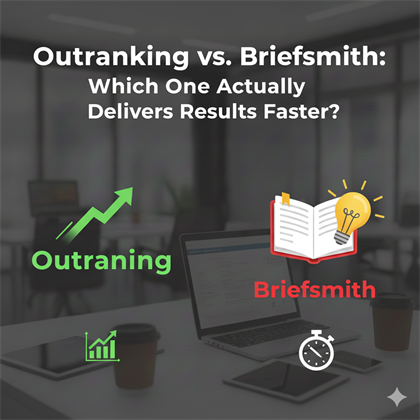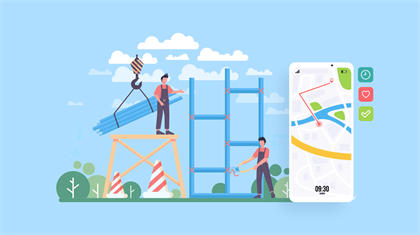
The digital marketing landscape is more competitive than ever before. With countless ads, content, and campaigns flooding online platforms daily, how do you stand out? The answer lies in human-centered marketing—a strategy that shifts the focus from selling to building genuine connections with your audience. Forget buzzwords and automation overload; this approach leverages empathy, personalization, and value-driven communication to forge lasting customer relationships.
Whether you're a small business owner, a marketing professional, or the founder of a budding startup, human-centered marketing offers a practical framework for success. By aligning your strategies with the needs, emotions, and desires of real people, you can ensure your brand resonates in a deeply personal way.
This post dives into how you can integrate human-centered marketing within the traditional stages of a marketing funnel. We'll look at actionable strategies across awareness, interest, decision-making, action, and retention to build a marketing approach that feels less transactional and more authentic.
Understanding the Marketing Funnel
At its core, the marketing funnel represents the customer journey from becoming aware of your brand to becoming a loyal advocate. A well-designed funnel not only converts leads into customers but also retains them for the long term, turning every sale into a potential lifetime value.
But here's the thing—many businesses approach the funnel with a rigid, one-size-fits-all mindset. Human-centered marketing challenges this by allowing for empathy and flexibility at every stage. Instead of treating customers as data points or transactional opportunities, human-centered strategies encourage organizations to see them as individuals.
If you’re ready to humanize your approach, here’s how to optimize each stage of the funnel.
Step 1: Awareness - Attracting Potential Leads
The first stage of the funnel is where your audience discovers your brand for the first time. The key here is to create content and experiences that spark curiosity while addressing a problem or need. Instead of shouting your product at the world, focus on relatable storytelling and addressing your customers' potential pain points.
Strategies for Driving Awareness:
- Create authentic social media campaigns. Platforms like Instagram and TikTok thrive on sincerity. Share behind-the-scenes looks into your operations or highlight stories of how your product or service has made a difference for real people.
- Build authority with value-first content. Blogs, eBooks, and video resources that solve common pain points in your customers' industries can drive organic traffic while establishing your expertise.
- Experiment with paid ads. Target your ideal audience with tailored ads that highlight relatable pain points rather than solely pushing sales.
- Utilize influencers for word-of-mouth marketing. A product recommendation from a well-trusted personality has 10x the credibility of even the best corporate ad.
At Red Shoes Inc., for example, our tagline, "Comfort that powers you," speaks directly to our target audience of entrepreneurs. We focus less on flashy features and more on resonating with their desire for reliability and comfort.
Step 2: Interest - Nurturing Leads with Valuable Content
Once you've attracted attention, it’s time to nurture interest by providing consistent, valuable content. At this stage, you need to deepen the connection between your brand and your potential customers.
Human-centered marketing in this phase means showing your audience that you understand their challenges and providing personalized solutions.
Strategies for Nurturing Interest:
- Email campaigns that speak their language. Forget cold and robotic emails. Instead, send carefully tailored messages that share how your offerings align with their specific needs or passions.
- Interactive content like webinars or Q&A sessions. Engage customers in real-time and answer their questions with genuine interest.
- Customer segmentation. Using tools to segment your leads based on their preferences shows you’re listening. For instance, Red Shoes Inc. creates buyer personas to ensure our product feature content targets casual users versus performance-driven professionals in a way that feels highly relevant.
Step 3: Decision - Showcasing Your Product or Service Benefits
This is a turning point in the buying process. The decision phase is where potential customers weigh the pros and cons of their options to make a final call. Human-centered marketing in this phase is about building trust by clearly communicating what sets you apart while ensuring the focus remains on the customer’s needs rather than on you.
Strategies for Driving Decisions:
- Offer transparent comparisons. Instead of shirking away from competitors, highlight side-by-side comparisons that demonstrate your value. Transparency here can foster trust.
- Customer testimonials and success stories. Did your product help someone save time, grow their business, or find happiness? Share these stories authentically.
- Free trials or money-back guarantees. Remove the risk by offering a no-strings-attached way for customers to try your offering.
- Personalized follow-ups. Use email or SMS to address their hesitations. A simple “We noticed you’re exploring our product; how can we help?” can go a long way.
Step 4: Action - Converting Leads into Paying Customers
When your prospect is ready to buy, make sure the process is convenient, enjoyable, and rewarding. Nothing kills a customer relationship faster than barriers during conversion—like a clunky checkout experience or lack of useful FAQs.
Strategies for Making Conversions Smooth:
- Simplify your checkout process. Whether you're selling shoes or SaaS, fewer clicks equal happier customers.
- Offer post-purchase discounts. A “Thank you for choosing us” message complete with a token discount for their next purchase can reinforce goodwill.
- Follow-up immediately. Send an instant confirmation email to make buyers feel reassured.
Step 5: Retention - Building Long-Term Loyalty
Congratulations, you've made the sale! But the customer’s journey with your business doesn’t stop here. The retention phase is arguably the most human-centered part of the funnel. Why? Your focus shifts completely to creating lasting value for your customers.
Strategies for Ensuring Long-Term Engagement:
- Engage on social media. Celebrate your customers by reposting their tagged stories or offering shoutouts. Red Shoes Inc. often features customer photos and reviews, solidifying our community-first identity.
- Create exclusive communities. Invite customers to join loyalty programs or forums where they can interact with fellow enthusiasts.
- Offer personalized rewards. Whether it’s early access to new launches or birthday discounts, these gestures build emotional connections.
- Listen and respond to feedback. Show you value their input by implementing improvements directly based on their needs.
Humanize Your Funnel for Maximum Impact
The beauty of human-centered marketing is that it transforms your funnel from a rigid sales structure into a dynamic and empathetic system. By creating value at every stage—from awareness to retention—you not only convert leads but nurture relationships that drive loyalty and advocacy.
At Red Shoes Inc., we observe this principle every day as we consistently refine our processes and put human connections at the forefront of our marketing strategies. Remember, successful marketing isn’t just about selling; it’s about crafting a story that your audience feels compelled to be part of.
Want to learn how human-centered marketing could work for your brand? Start optimizing your marketing approach today by downloading our exclusive Funnel Optimization Checklist [link].
Leave a Reply
You Might Like Also

Outranking vs. Briefsmith: Which One Actually Delivers Results Faster?

Why Small Businesses Need Field Service Management Software?















